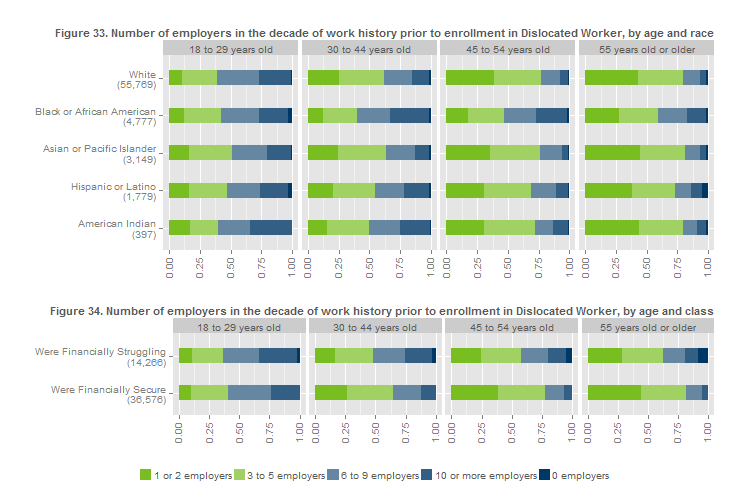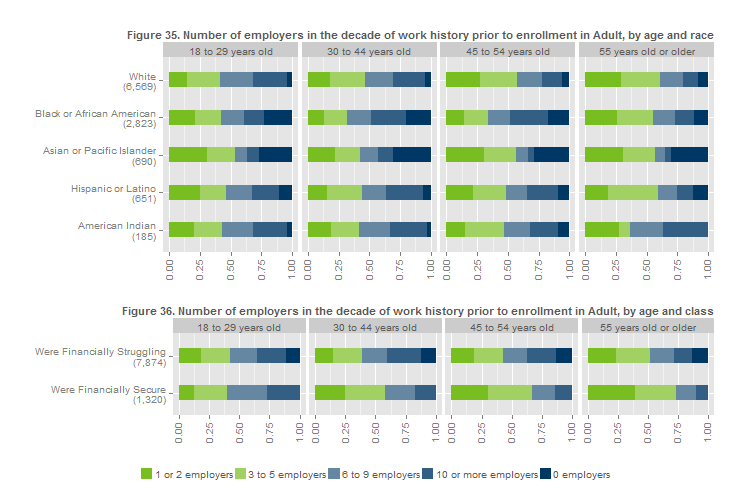Figures 33 through 36 show the number of employers the participant worked for in the decade prior to enrollment. Because we expect the number of employers to vary by age, we show results by age cohort.

A high number of employers could signal that participants have held seasonal or temporary jobs, that they tend to hold more than one job at a time, or both. Although more employment stability is not uniformly better, and wider labor market trends are reducing this option altogether for younger generations, employment stability can signal a higher job quality.
Among those age 30 and older, white and Asian or Pacific Islander participants in both programs tend to have the highest rates of employment stability, with one or two employers in the past decade (Figures 33 and 35). Similarly, participants in both programs who were financially secure prior to participation have higher rates of employment stability than those who were financially struggling (Figures 34 and 36).
Among Adult program participants over age 30, a significant proportion of Asian or Pacific Islander, Black or African American, and Hispanic or Latino participants have had no formal employment in the decade prior to enrollment. Given the information on rates of limited English skills (see Limited English Skills), this likely signals immigrant status rather than joblessness per se.

One program manager spoke to the “soft skills” barrier to employment stability:
“[We’re] really working with them on the soft skills because honestly a lot of our folks can get jobs. It's keeping jobs is where they have problems. Conflict management, conflict resolution. […] And we can support them on how to handle certain situations in the workplace.”
Other research suggests that this employment stability disparity among program participants is not reflective of the general population. Recent research has shown no racial differences, among white, black, and Hispanic baby boomers, in the number of jobs held during their prime working years (25 to 48) (See Note 1). We do not know whether this result will hold true for the younger generations represented by program participants, but this could suggest that participants of color (especially Black or African American, Hispanic or Latino, and American Indian participants) have unique barriers related to job history.